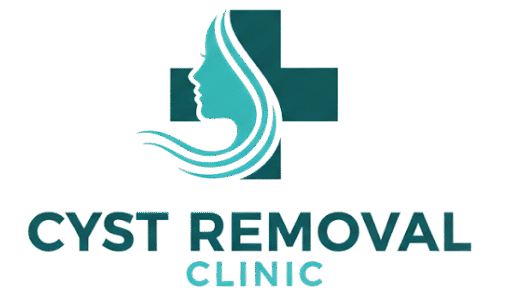In recent years, laser-based treatments have become popular across dermatology and cosmetic surgery, from mole removal to scar revision. However, when it comes to cyst removal, the role of laser technology is often misunderstood.
Many patients search online for “laser cyst removal” believing it offers a scar-free, non-surgical alternative. In reality, while lasers can be used as part of the process, they do not replace surgical excision.
This article explains how laser-assisted cyst removal works, its potential benefits, and why traditional surgical methods remain the most reliable option for complete, long-term cyst treatment.
What is Laser-Assisted Cyst Removal?
Laser-assisted cyst removal uses focused light energy to make a small opening in the skin or to assist in cutting and sealing tissue during surgery. The laser acts as a precision cutting or vaporising tool, reducing bleeding and minimising trauma to surrounding skin.
In cyst treatment, a laser may be used to:
- Create a fine incision to access the cyst
- Help drain the contents of the cyst
- Cauterise (seal) small blood vessels to reduce bleeding
- Smooth or refine the treated skin after excision
However, the key point is that a cyst’s wall (capsule) must still be physically removed to prevent recurrence. A laser cannot dissolve or “burn away” the entire cyst capsule beneath the skin.
When Lasers May Be Used
Laser assistance can be useful in specific scenarios but is not a standalone treatment. It’s typically applied as an adjunct to conventional cyst surgery in:
- Facial or cosmetic areas, where precision and minimal bleeding are priorities
- Small epidermoid or sebaceous cysts close to the skin surface
- Patients prone to scarring or pigmentation changes, where reduced heat or trauma is beneficial
- Fine cosmetic revision following cyst excision to refine any visible mark
For most patients, laser tools are simply an enhancement to the doctor’s technique rather than a substitute for proper surgical removal.
How the Procedure Works
The steps of laser-assisted cyst treatment are similar to minor surgical excision, with the laser replacing the scalpel for part of the process.
- Preparation and anaesthetic
The area is cleaned and numbed using local anaesthetic. - Laser incision
The laser is used to make a small, precise opening over the cyst. The heat energy cuts and seals simultaneously, reducing minor bleeding. - Drainage or removal
The doctor drains the cyst’s contents and carefully extracts the capsule — the key step for permanent removal. - Closure
Depending on the depth, the opening may be left to heal naturally or closed with fine sutures. - Aftercare
A sterile dressing is applied, and the patient receives standard wound-care guidance.
While the laser provides technical precision, the outcome still depends on complete cyst wall removal, not the use of light energy alone.
Benefits of Laser Assistance
When used appropriately, laser tools can provide some advantages:
- Reduced bleeding – the laser cauterises tiny blood vessels as it cuts.
- Precision – allows finer control for small, delicate cysts on the face.
- Lower tissue trauma – may shorten healing time in some cases.
- Cleaner cosmetic result – particularly for small cysts in visible areas.
However, these benefits depend on the operator’s experience and the cyst’s condition. The technology itself doesn’t make removal more “complete” — the surgical skill of the doctor remains the deciding factor.
Limitations and Misconceptions
Despite growing interest, laser-assisted cyst removal has clear limitations:
1. Not suitable for infected or deep cysts
Lasers are ineffective against cysts filled with pus or inflammation, as heat can worsen infection or damage nearby skin.
2. Cannot remove the cyst capsule entirely on its own
The cyst sac must be dissected and extracted manually. If even a small portion remains, the cyst will likely return.
3. Limited evidence for better long-term results
Clinical studies show no significant difference in recurrence rates between laser-assisted and conventional excision when both are performed correctly.
4. Cost and accessibility
Laser equipment is expensive and not always available in standard medical settings, often increasing treatment cost without clear benefit.
5. Marketing confusion
Many clinics use “laser removal” as a marketing term. In reality, most procedures still involve surgical steps — the laser is simply a cutting tool.
Comparison: Laser-Assisted vs. Traditional Excision
| Feature | Laser-Assisted Cyst Removal | Conventional Surgical Excision |
|---|---|---|
| Technique | Uses laser to incise and cauterise | Uses scalpel or minimal excision |
| Anaesthetic | Local | Local |
| Bleeding | Minimal | Minimal |
| Scarring | Slightly reduced in small cysts | Minimal with good closure |
| Infection risk | Similar | Similar |
| Capsule removal | Manual | Manual |
| Recurrence risk | Low (if capsule removed) | Low (if capsule removed) |
| Cost | Higher | Standard |
As shown, the main determinant of success is not the device — it’s the completeness of cyst removal and the surgeon’s technique.
Recovery and Aftercare
Recovery after laser-assisted cyst removal is very similar to traditional excision:
- Mild redness or tenderness for a few days
- Minimal bleeding or swelling
- A small scab or fine line that fades over time
Aftercare tips include:
- Keep the area dry for 24 hours
- Avoid touching or picking the wound
- Use high-SPF sun protection on facial areas
- Follow any wound-care or antibiotic advice provided
Most patients heal within one to two weeks, depending on the cyst’s size and location.
When a Laser May Not Be the Best Option
While lasers can enhance certain treatments, they’re not the best choice for every patient. Traditional excision remains preferred for:
- Large cysts or multiple cysts
- Infected or inflamed cysts
- Cysts on thick or oily skin (back, chest)
- Deep-seated cysts below the dermis
For these cases, a small surgical incision allows full removal of the capsule with less chance of recurrence.

